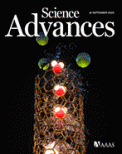2020
Type(s)HIV-1 Antibody Discovery
AuthorsSonu Kumar, Bin Ju, Benjamin Shapero, Xiaohe Lin, Li Ren, Lei Zhang, Dan Li, Zehua Zhou, Yi Feng, Cindy Sou, Colin J. Mann, Yanling Hao, Anita Sarkar, Jiali Hou, Christian Nunnally, Kunxue Hong, Shuo Wang, Xiangyang Ge, Bin Su, Elise Landais, Devin Sok, Michael B. Zwick, Linling He, Jiang Zhu, Ian A. Wilson, Yiming Shao
SourceScience Advances 16 Sep 2020: Vol. 6 no 38, eabb1328 DOI: 10.1126/sciadv.abb1328
Urlhttps://advances.sciencemag.org/content/6/38/eabb1328
An oligomannose patch around the V3 base of HIV-1 envelope glycoprotein (Env) is recognized by multiple classes of broadly neutralizing antibodies (bNAbs). Here, we investigated the bNAb response to the V3 glycan supersite in an HIV-1–infected Chinese donor by Env-specific single B cell sorting, structural and functional studies, and longitudinal analysis of antibody and virus repertoires. Monoclonal antibodies 438-B11 and 438-D5 were isolated that potently neutralize HIV-1 with moderate breadth, are encoded by the VH1-69 germline gene, and have a disulfide-linked long HCDR3 loop. Crystal structures of Env-bound and unbound antibodies revealed heavy chain–mediated recognition of the glycan supersite with a unique angle of approach and a critical role of the intra-HCDR3 disulfide. The mechanism of viral escape was examined via single-genome amplification/sequencing and glycan mutations around the N332 supersite. Our findings further emphasize the V3 glycan supersite as a prominent target for Env-based vaccine design.


